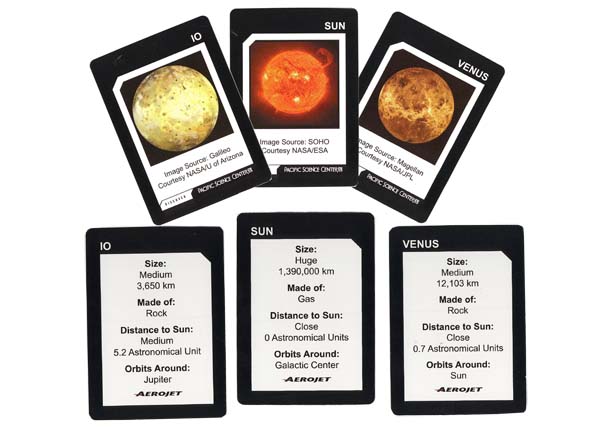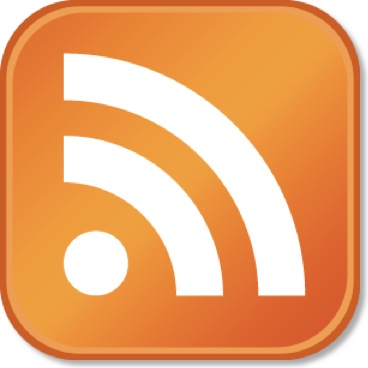Archive for the ‘Relinking’ Category
 A Puzzle and Two Carnivals
A Puzzle and Two Carnivals
Sunday mornings I enjoy playing the NPR’s puzzler with my family. I thought you might enjoy a puzzle/mindgame too.
It was late one December, and I was out for a walk with my family. The full moon was rising. It was rising almost due Northeast. Why?
This puzzle helped me solidify my understanding of the celestial sphere, so if you already completely understand the celestial sphere it might not be much of a puzzle – but if you’re still learning about it, figuring out this puzzle could be a turning point for you.
I’ll leave moderated comments on for this post: if you leave the answer I won’t approve the comment, but I’ll e-mail you a reply. You are welcome to leave further questions in the comments as well, but hints will only come to you via e-mail, I will not post more hints here.
Also, there are two Carnivals of Space for you to check out:
109, hosted by Discovery Space
![]()
~ A l i c e !
 A Few Good Links
A Few Good Links
Phil Plait, the Bad Astronomer, is having an astrophotography contest over at his blog. It is sponsored by Discover Magazine and Celestron. It should be fun, and there are good prizes!
also –
Carnival of Space #103 – over at ChandraBlog has lots of good Hubble links.
Carnival of Space #104 – at Mang’s Bat Page with some cool info on planes and rockets, as well as some great photos.
and
Carnival of Space #105 – hosted by Space Disco also has photos of a number of the featured bloggers! Also, interesting articles and an e-mail with very strange title.
I’m not in any of them, but I will be soon, and check out what others are saying while I’m quiet.
![]()
~ A l i c e !
 Carnival of Space (#101, #102)
Carnival of Space (#101, #102)
Oops, I have some catching up to do:
Go see Carnival of Space #101 at Robot Explorers
and
Carnival of Space #102 – at The Spacewriter’s Ramblings
![]()
~ A l i c e !
 Smithsonian Photography Contest
Smithsonian Photography Contest
click! Photography Changes Everything is an online exhibit put on by the Smithsonian, and they’re looking to celebrate the International Year of Astronomy with us!
If you like photography and you like writing you might like to submit a photo and a short story.
This month’s focus: Seeing Other Worlds
Submit a photo showing how photography influences our ability to see ‘unseen’ or unfamiliar worlds to become part of this month’s focus, Seeing Other Worlds.
Some things to consider: How can photography help us see things that would otherwise go unnoticed in our everyday lives? How does micro- and macro- photography (e.g. from microscopic bacteria to galaxies far beyond the earth) change our perception of the world and our place in it? How do new imaging technologies and software (e.g. MRI’s, CAT scans, Google Earth, etc.) change what we’re able or want to see? How does photography shape awareness and shape our perception of other communities, cultures and lifestyles?
I can’t find a deadline, and I’ll bet that’s because the exhibit goes on all year, but with different themes at different times.
It’s an interesting exhibit – take a look around.
![]()
~ A l i c e !
P.S. I promise to have an astronomy post for you soon – I’m working on putting together an overview of the new sky.
 Carnival of Space #99
Carnival of Space #99
Welcome, one and all, to the 99th edition of the Carnival of Space. I feel special to host the last two-digit Carnival (and I can’t wait to see who gets #100!).
On with it!
I present this week’s Carnival in the form of my best recipe for bread (my friends call it Alice Bread, and it is quite easy to make):
- First you need 1 Cup hot water (as hot as you can get from the tap) – and in that vein Christopher of the fairly new and piping hot Innumerable Worlds presents an analysis of the Sun’s wobble (What if we were looking back at ourselves from 10pc away? Would we detect the worlds we have here?).
- Next, Brian, Next Big Future, tells us about eensy-weensy solar sails that are probably smaller than the 1 Tbsp Regular Yeast you’ll need next, and space based solar power.
- Make sure your yeast is at least as fresh as the radio news from Nicole at One Astronomer’s Noise – don’t try this with a packet that’s been in the back of your cupboard for years.
- A Babe in the Universe, Louise, celebrates Yuri’s Night with at least 1 Tbsp Sugar.
- You can use any sweetener you like – just something for the yeast to eat, and to add a little flavor to the bread, and Alan from MSNBC offers a number of choices, addressing the questions of space-based solar power, Hubble’s “Hand” in space, and rocket racers.
- Mang from the 433rd faces the oil (1 Tbsp Oil, that is) and water of the Pluto question.
- Kimberly from the Chandra team shows us what Chandra is up to, combining its data with that from other scopes, just like I use various oils to get various flavors in this bread: I use olive for a “French” bread, and canola for a slightly plainer taste.
- Emily, Planetary Society Weblog, loves the shadows on Saturn’s Rings, rings which we all know are made of tiny particles – just like the 3-5 Cups of Flour you’ll require.
- I use All-Purpose white flour from the USA – if you love whole wheat I’d do several experiments instead of using this recipe as is. Speaking of experiments, Brian, the One-Minute Astronomer visited base camp for some very famous ones, and reports on his visit to Palomar. (Also, if you live in another country your flour may have a different gluten content, so try this recipe and let me know how it works, but the recipe is very flexible, so I’d expect it to turn out okay).
- Heat a bowl. Ian from AstroEngine examines the Sun’s theoretical binary companion: it wouldn’t be very hot, comparatively, but still significantly hotter than you need to get the bowl you’ll be working with. I heat my bowl by running the backside of the bowl under hot water until it doesn’t feel cool anymore.
- Put your hot water in the heated bowl, which is where the Mars Sample Return missions David at Rocket Explorers looks at never quite got.
- Mix sugar and oil in with the hot water (the goal is to have warm, happy, well-fed yeast). I mean, if you were going to go meet aliens around another star, wouldn’t you want them to be warm, happy, and well fed? Paul from Centauri Dreams talks about human interstellar flight versus robotic probes creating a “telepresence.”
- Add yeast to your hot water mix. Paul of the Meridiani Journal examines strange formations on Mars, much like the strange formations you’re about to observe in your yeast.
- Stir once, and while you do so read Stuart’s presentation “Rover Hugger” (which I can’t wait to finish reading myself!).
- Wait until the yeast reproduces (you’ll see it “bloom” or get foamy). This is the best part! This should take 2-5 minutes, and you can watch it happen before your very eyes. Ethan at Starts with a Bang has also been watching for evidence of “babies” on a much different scale and has the secret to why nature decorates her galactic nurseries for girls.
- Add one cup of flour. Stir, just like Colbert stirred up the ISS-module-naming community over the last few weeks. Robert of Collect Space weighs in on the NASA/Colbert naming resolution.
- Add another cup of flour. Stir, and since he stirred up the community so well, Irene from the Discovery Channel knows just what NASA should do about Colbert.
- Add a third cup of flour, knead in – don’t cut like you would a pastry, or like Occam’s razor might if you were Tycho Brahe: Ian of Astroblog wonders what the real role of parallax measurements in Tycho’s rejection of the Copernican system was.
- Hubble just keeps finding more cool stuff, in this case presented by Phil, the Bad Astronomer, and just like that, if you need more flour, keep adding and kneading – you want to have dough that forms a ball and stays that shape.
- Don’t worry about overkneading, but also don’t add more flour than you need just because the recipe calls for 3-5 cups. Speaking of adding more than one might need (or perhaps not enough), Shubber of the Space Cynics opines about the bailout’s effect on space projects.
- If it’s stiff after just 2.5 cups, let it be – you’re done, but Nancy from the Universe Today hopes this isn’t the case for our space station and that we extend the life of ISS.
- Oil a second bowl. Use the same oil you used in the bread, and speaking of using something you’ve used before, Bruce examines the remake of The Day the Earth Stood Still over at 21st Century Waves.
- Place the dough in the bowl, turn once to get it coated in oil – it might even look like the Moon Alexander of Potentia Tenebras Repellendi is writing about in his search for the Moon’s mother.
- Darnell of Colony Worlds wonders if space elevators are rising in the right direction. Your bread certainly should be: let it rise until it’s doubled in size, covered and warm (About 45 minutes). I preheat my oven to about ~100F (I know, you can’t do that, I just turn it on for 10 minutes and then turn it off and keep it closed).
- Punch down, knead once or twice, and form into the shape you want – perhaps the shape of Ryan’s Moon rocks. He took a short detour from the Martian Chronicles to check out Moon rock processing at Johnson Space Center. I make an oval on my baking sheet, but it works in a loaf pan too.
- Let rise again for at least 15 more minutes, but you can let it go for up to 45. At least you don’t have to wait 520 days like the people on the mission to Mars currently happening in Moscow. Bruce from Music of the Spheres reports.
- Bake in a greased or completely non-stick pan at 350° F for 45 minutes. Speaking of baking, I really don’t want to be on this mission: Ralph from Discovery Enterprise suggests we send crewed missions to Venus, and Alex found a video about a Mars mission based on Apollo technology.
Okay, so my grammar had to get a little weird there, sorry. It’s kind of hard to make a carnival list fit a recipe.
Please comment to let me know about any mistakes. If you’re not out of time yet, don’t miss the past couple Carnivals:
Have fun!
![]()
~ A l i c e !
 Ada Lovelace Day and Carnivals of Space
Ada Lovelace Day and Carnivals of Space
Susan Sakimoto
I want to tell you about Susan Sakimoto. No, you haven’t heard of her. No, you won’t be asked to write a report on her (at least, probably not this year). She was the unofficial adviser for my Bachelor’s Honors thesis project in Astronomy-Geology at Whitman College. At the time she was working at NASA Goddard, now she’s a professor at Notre Dame. She studies lava flows … on Mars. And the part that really impresses me: she has kids (whose dad also works full-time at Notre Dame), she runs, and yet somehow her house is still cleaner than mine. Let me reiterate that:
Susan has:
- children (and it’s not like they have a stay-at-home-dad instead of a stay-at-home-mom)
- a full-time job – doing science (which you kinda never stop thinking about, and sometimes you have to work all night on to meet deadlines, and often sends you to meetings in who-knows-where)
- a regular “physical” hobby (not the kind of hobby you can put aside for a month and come back to)
- and then she took me on as an unofficial advisee…
- oh yeah, and her house is clean!
I dunno about you, but one or two of those sound like plenty to me. She’s one of those amazing people who does it all. I often feel like I can barely handle my full-time job and house chores. You start talking to me about kids and trying to make it to yoga every week, regularly, and I start wondering what I can drop or cut short.
I’m impressed, but these women are not rare. I’ve met many of them, and I continue to meet more. The key seems to be commitment. If you set your mind do something, and commit to it, you can. So go for it!
Ada Lovelace Day
So why am I telling you about Susan Sakimoto? Because today is Ada Lovelace day. Ada is widely attributed as the woman who wrote the first computer program. She worked closely with Charles Babbage on developing the first mechanical computers. She is one of the many amazing women in science and technology.
As part of the celebration of Ada Lovelace Day I signed a pledge saying I would write about a woman I admire, someone who works in technology. Unfortunately for me, there are so many women in science and technology I admire, that I didn’t know who to write about! There’s Ada herself, of course, and Annie Jump Cannon, Cecelia Payne-Gaposhkin, and Williamina Fleming. And then there are the current scientists (most of whom you’ve never heard of because you tend not to get famous until you’re dead or almost dead): Hannah Jang-Condell, Susan Sakimoto, Andrea Dobson, Pamela Gay (the list goes on and on and on). As you now know, I finally settled on Susan.
Carnival of Space
In the interest of clearing up loose ends – I owe you links to several Carnivals of Space:
- Carnival of Space #94 – Including the announcement that Bad Astronomer is giving away a Galileoscope!
- Carnival of Space #93 – Including a discussion about whether you’ll be able to visit ISS as a space tourist.
- Carnival of Space #92 – With bits about the crash of the Carbon Observatory …
Where’d I Get My Info:
http://www.sdsc.edu/ScienceWomen/cannon.html
http://www.carleton.edu/departments/PHAS/Astro/pages/marga_michele/Cecilia_Payne.html
 Planets Cards!
Planets Cards!
Do you need a Solar System? I’ve got one for you.

Bear with me, deep linking to the following website doesn’t work, so follow these quick instructions to acquire your own Solar System:
- Go to Pacific Science Center’s website: http://www.pacificsciencecenter.org/
- Click on “Store” in the middle of the right-hand column.
- Click on “Gifts” in the left column.
- Click on “Educational” in the middle pane.
- You’re there! See “Solar System Cards” in that list? I made those. There are 44 awesome objects in our Solar System – plus several blanks and a list of suggested activities.
Funny Story:
So a few years ago, shortly after receiving my teaching certificate, Pluto was “demoted.” (In fact, my very first AstroInfo was about the new definition of planet!) Although people have many, many feelings about this, and there’s an ongoing argument, I’m going to ignore that part of the story for the time being.
What this created was a difficulty for teachers. Do we still teach Pluto? Does “My Very Eager Mother Just Served Us Nine Pizzas” become “My Very Eager Mother Just Served Us Nachos”? Does “Mary’s Violet Eyes Made John Stay Up Nights, Period” become “Mary’s Violet Eyes Made John Stay Up Nights”? What if Pluto is reinstated next year? What if you live in Illinois?
Well, the first question is easy. You most definitely still teach about Pluto. It’s not like the demotion made it evaporate out of our Solar System or disappear into nothingness. In fact, now it is probably more important to teach Pluto, since it’s the best-known representative of several whole classes of objects (Kuiper Belt Objects, Plutinos, Dwarf Planets, and Trans-Neptunian Objects). As we discover more and more of these, kids (and adults) need to know at least where these new discoveries are taking place. Teaching about Pluto helps with that.
But if it’s not a planet, what is it? What do I call it? What if they change the name? How can I teach science, if science is changing all the time? Those first two questions you can look up on the internet. The second two suggest some thought.
How can I teach science, if science is changing all the time?
This is a great question, and it applies to more than just “The Pluto Debate,” but that’s where I started. And it turns out, I wasn’t the only educator working on this problem. Anna Hurst from the Astronomical Society of the Pacific, and John Ericson at the Lawrence Hall of Science were also focusing on giving teachers a new way to teach the Solar System in the wake of The Pluto Kerfuffle. We were not in correspondence. We were not discussing this with each other, we did not meet and work on this problem together. In fact, I don’t think I met either of them until long after this.
Yet we all came up with the same solution: a set of cards or slips of paper, each with information about a different object in our Solar System. Teaching the Solar System was going to have to evolve from “facts about each of the nine planets” to something that was more closely related to a lot of what planetologists actually do: classify, categorize, and identify. This mean that the new way of teaching the Solar System needed to involve dozens of objects, not just eight or nine, because there are actually dozens, hundreds, thousands of objects in our Solar System!
Besides the inherent flexibility and educational merit of this new activity, it also gives you a positive and fun way to teach about what happened to Pluto. You can allow your students to make their own definitions for planet, and see which objects fit (or don’t fit) their definition.
Anyway, I find it fascinating that the three of us came up with the same activity independently. I’m sure that many other teachers around the world also must have thought of this idea too, and so I claim no copyright or patent on the activity, but if you don’t have time to make your own set of 30-50 cards, you can (finally) just purchase a set from us – and support both my job and my planetarium while you’re at it!
If you’re interested in John and Anna’s versions:
Lawrence Hall of Science Gread Explorations in Math and Science (since I can’t remember exactly which module has this activity, I’ll send you to the general link. If you know where it is, let me know!)
Astronomical Society of the Pacific’s The Universe in the Classroom, Issue #70 Hubble Observations of Pluto and Ceres. Scroll all the way down to “Activity 1: Sorting the Solar System” and the cards are there.
There is also a printable (draft) version of my cards, but I recommend ordering a nice set from above, since all the attributions for the photographs are correct, and multiple people have proofread them. The drafts will get you through the activity just fine, but the cards are a bit better.
 NASA Mission Madness
NASA Mission Madness
You know how in sports they have playoffs with brackets where you predict which teams are going to win, and then of the teams that are left you make more predictions and so on until you have your prediction for the winner of everything?
I just spent half an hour on NASA’s “Mission Madness” predicting which Mission will “win” their “playoffs.” It was hilarious, and they made some of the decisions pretty hard.
Which do you think will win in a playoff between Hubble and Apollo 11?
 Carnival of Space #80, #81, #82, and #83
Carnival of Space #80, #81, #82, and #83
While I was off gadding about writing grants and training staff … No fewer than FOUR Carnivals went up. Here they are:
Carnival of Space #80 – The Thanksgiving Edition at Starts with a Bang
Carnival of Space #81 – hosted by Tiny Mantras
Carnival of Space #82 – in VIDEO format at Space Disco
and lastly, this week’s (in which I feature at the end, beside Nicole of One Astronomer’s Noise)
Carnival of Space #83 – The Antipodean Edition from Astroblog (in Australia!)
I would like to mention that Nicole’s featured article about the planet found around Fomalhaut is AWESOME. She read the paper, and really explains it to us. She’s analyzing if the paper was done well, and if it really does point towards the splotch of light being a planet or not. You’ll have to go over there to read what she thinks.
 The Real Deal: Space Pens
The Real Deal: Space Pens
You need to read this
Astronaut pens DIDN’T cost NASA $1million dollars, while Russia decided to use the pencil. Read it all here: Starts With a Bang



